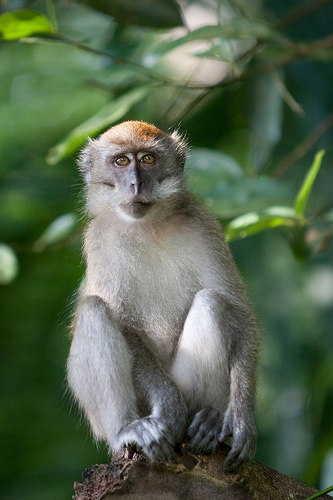Crab-eating macaques are not so fascinated by crabs.
- Crab-eating macaques are medium-sized monkeys originating in jungle and forest areas, generally with nearby water access, in Asia’s south-east.
- ‘Crab-eating macaques’ are also known as ‘long-tailed macaques’, ‘java monkeys’ and ‘cynomolgus monkeys’.
- Crab-eating macaques have the scientific name Macaca fascicularis, being from the family Cercopithecidae, the family of Old World monkeys, and the species includes ten subspecies.
- The typical size of a crab-eating macaque is 38 to 55 centimetres (15 to 22 inches) in height and they generally weigh between 3 to 9 kilograms (6.6 to 20 pounds).
- Crab-eating macaques most often live in troops with four to twenty others of their own species, and the group commonly contains more females than males, although there is generally a dominant male, which is decided by combat.
A Crab-eating Macaque
Image courtesy of Brian Jeffery Beggerly/Flickr
- Typically, crab-eating macaques have a lengthy tail of 40 to 65 centimetres (16 to 26 inches), and fur coloured a combination of grey, yellow, white and brown.
- The diet of crab-eating macaques consists mostly of fruit, nuts and seeds, and they also consume other vegetation, as well as animals, such as birds and their eggs, fish, lizards, frogs, crabs and other crustaceans.
- Female crab-eating macaques give birth to one baby at a time, although young ones can be subject to infanticide or kidnapping, and they have an average lifespan of 15 to 30 years.
- Crab-eating macaques may use water to wash food, or use stones to open tough, enclosed items, and they have been studied for medical reasons, as these monkeys are effected by disease in similar ways to humans.
- Crab-eating macaques have been introduced into some parts of Asia, and in some areas they are thought of as pests, while in other areas, they are considered sacred.
Bibliography:
Crab-eating Macaques, 2013, A-Z Animals, http://a-z-animals.com/animals/crab-eating-macaque/
Crab-eating Macaques, 2014, Wikipedia, http://en.wikipedia.org/wiki/Crab-eating_macaque







